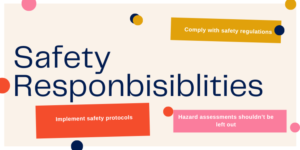In the field of health and safety, it’s advised that employers to record workplace injuries and illnesses that require “medical treatment beyond first aid.” this serves as data to monitor trends and patterns to predict any unwanted future occurrence.
However there are specific meanings to the term “medical treatment” and “first aid” In the context of workplace accidents.
Employers must understand the difference between first aid and medical treatment to meet their injury and illness reporting and recordkeeping responsibilities.
Firstly, let’s understand the basics for Reporting Workplace Injuries. Employers must report all workplace injuries or illnesses that result in:
👉 Death;
👉 Loss of consciousness;
👉 Days away from work;
👉 Restriction to work responsibilities;
👉 Job transfer;
👉 A significant injury or illness diagnosed by a licensed health care professional; or
👉 Medical treatment beyond first aid.
Now what’s differentiates First Aid Case from Medical Treatment Case?
First aid practices includes applying band-aids, gauze pads, and butterfly bandages; use of non-rigid means of support like elastic bandages and wraps; cleaning wounds on the surface of the skin; removing splinters; and drinking fluids to relieve heat stress.
First aid is usually administered after the injury or illness occurs and at the location where the injury or illness occurred (e.g., the workplace).
First aid generally consists of one-time or short-term treatment.
First-aid treatments are usually simple and require little or no technology.
First aid can be administered by people with little training (beyond first-aid training) and even by the injured or ill person.
First aid is usually administered to keep the condition from worsening, while the injured or ill person is awaiting medical treatment.




